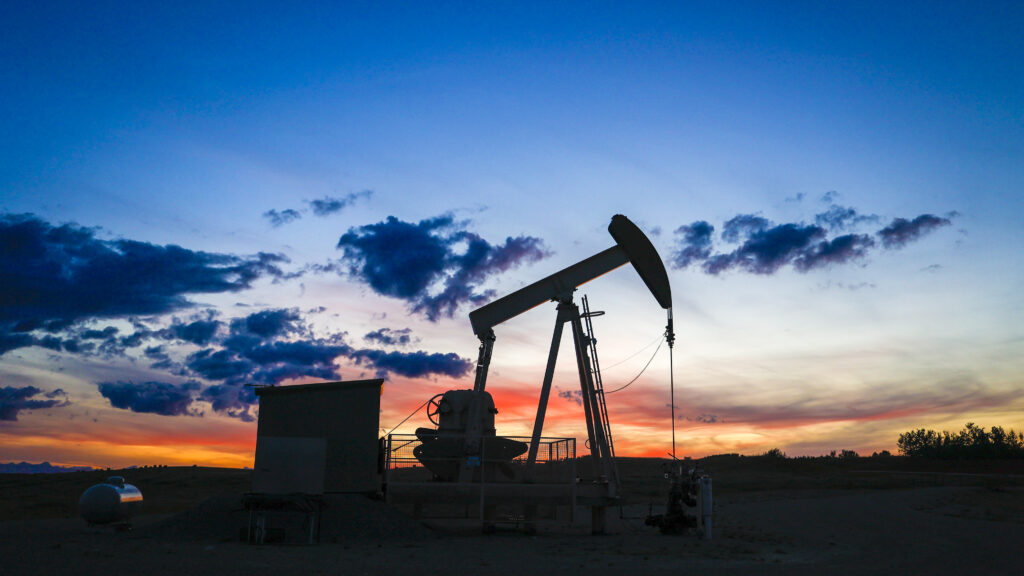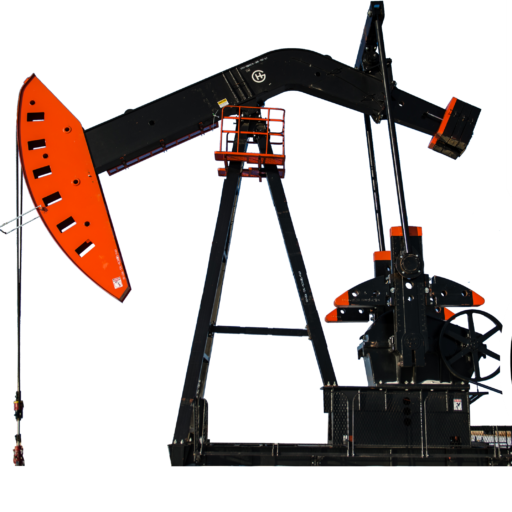
An oil and gas lobby group says the federal government’s proposed emission cap on the sector combined with its stringent targets for methane reduction could reduce Canada’s non-oilsands fossil fuel production by one million barrels per day by 2030. A pumpjack draws out oil from a well head near Calgary, Alta., Saturday, Sept. 17, 2022. THE CANADIAN PRESS/Jeff McIntosh
A new report commissioned by an industry lobby group on the federal government’s proposed emissions cap stirred up strong reactions from both oil and gas supporters and environmental groups on Monday.
The report, by S&P Global Commodity Insights, was commissioned by the Canadian Association of Petroleum Producers to examine the impact of various proposed emissions-reducing policies on Canada’s conventional (non-oilsands) oil and gas producers.
Its conclusions Monday were used to support the industry argument that legislating an emissions ceiling will inhibit investment and growth, even as opponents argued the report’s methodology was flawed.
The commissioned report concludes that if oil and gas drillers were required to cut greenhouse gas emissions by 40 per cent by 2030, industry could see $75 billion less in capital investment over the course of the next nine years compared with current policy conditions.
The study says that would translate to one million barrels of oil equivalent less of production per day by 2030 compared with current forecasts, and 51,000 fewer jobs by 2030 than under existing government policies.
The findings align with what Canada’s oil and gas sector has long been saying — that the federal government’s proposed cap on emissions from the industry will amount to a de facto cap on fossil fuel production.
On Monday, CAPP president Lisa Baiton said the new report is proof that a federally mandated emissions cap “should not proceed.”
“Declines in production forced on the industry by a stringent emissions cap will result in significant job losses for Canadians, severe impacts on the economy and our GDP, and have the potential to compromise Canada’s energy security and prosperity,” Baiton said.
But the federal government has said all along that the oil and gas emission cap will be designed to limit emissions, not oil and gas production.
The government has said the design of the emissions cap will take into account other regulations, such as Canada’s commitment to reduce oil and gas methane emissions by at least 75 per cent by 2030, as well as complementary climate policies by federal and provincial governments.
And the hypothetical scenarios the CAPP-commissioned report examines do not use the same targets the federal government actually proposes in its draft emissions framework, released last December.
Under the proposed framework, the sector would have to cut greenhouse gas emissions by 35 to 38 per cent from 2019 levels by 2030. The sector would also have the option to buy offset credits or contribute to a decarbonization fund that would lower that requirement to cutting just 20 to 23 per cent.
“CAPP has commissioned an analysis of a non-existent scenario. Everything in it flows from false assumptions that make it so deeply flawed, it amounts to disinformation,” said Oliver Anderson, spokesman for Environment Minister Steven Guilbeault, in an email.
CAPP says its sponsored study adds in the projected impact of the federal government’s draft methane regulations, which would require at least a 75 per cent reduction of oil and gas methane emissions below 2012 levels by 2030, and takes into account that the policies have not been finalized and remain uncertain.
Environmental groups were quick to criticize the report’s methodology. Clean energy think-tank The Pembina Institute said the CAPP report includes only conventional oil and gas drillers and leaves out oilsands production, which accounts for the vast majority of the industry’s emissions profile.
The Pembina Institute added that when it comes to methane, which is where the bulk of conventional drillers’ emissions come from, significant reductions can be made using already existing, cost-effective technologies.
“Pembina Institute research demonstrates that the proposed 2030 emissions cap can be feasibly met by the oil and gas industry, almost entirely through a combination of methane reductions (which would mostly come from the conventional sector) and the Pathways Alliance’s 2030 emissions reduction plan (for the oilsands),” the think-tank stated in a release.
While the oil and gas sector is Canada’s heaviest-emitting industry, the bulk of those emissions come from the oilsands sector — where rising production is contributing to increased to total emissions.
Emissions from the conventional sector, which the CAPP reports focuses on, have been declining since 2014.
Alberta Premier Danielle Smith also waded in Monday, issuing a joint statement with the province’s environment and energy ministers in which she referred to the proposed cap as a “reckless gamble that will devastate Canadian families and do nothing to reduce global emissions.”
This report by The Canadian Press was first published May 27, 2024.
The Canadian Press
- 0098 SASPO-2874_Self Serve Campaign_New Connects_Youtube_v30098 SASPO-2874_Self Serve Campaign_New Connects_Youtube_v3
- 0100 Turnbull Project Manager0100 Turnbull Project Manager
- 0099 Mryglod Steel 1080p0099 Mryglod Steel 1080p
- 0097 Eagle Sky Ventures LTD0097 Eagle Sky Ventures LTD
- 0095 Fast Trucking nearly 70 years good at it0095 Fast Trucking nearly 70 years good at it
- 0053 Kingston Midstream Westspur Alameda Click Before You Dig0053 Kingston Midstream Westspur Alameda Click Before You Dig
- 0092 Turnbull projects big and small0092 Turnbull projects big and small
- 0046 City of Estevan This is Estevan Teaser0046 City of Estevan This is Estevan Teaser
- 0087 Lori Carr Coal Expansion0087 Lori Carr Coal Expansion
- 0077 Caprice Resources Stand Up For Free Speech0077 Caprice Resources Stand Up For Free Speech
- 0076 Latus only0076 Latus only
- 0061 SIMSA 2024 For Sask Buy Sask0061 SIMSA 2024 For Sask Buy Sask
- 0055 Smart Power Be Smart with your Power office0055 Smart Power Be Smart with your Power office
- 0051 JML Hiring Pumpjack assembly0051 JML Hiring Pumpjack assembly
- 0049 Scotsburn Dental soft guitar0049 Scotsburn Dental soft guitar
- 0041 DEEP Since 2018 now we are going to build0041 DEEP Since 2018 now we are going to build
- 0032 IWS Summer hiring rock trailer music
- 0022 Grimes winter hiring
- 0021 OSY Rentals S8 Promo
- 0018 IWS Hiring Royal Summer
- 0013 Panther Drilling PO ad 03 top drive rigs
- 0006 JK Junior
- 0002 gilliss casing services0002 gilliss casing services
- 9002 Pipeline Online 30 sec EBEX9002 Pipeline Online 30 sec EBEX
- 9001
